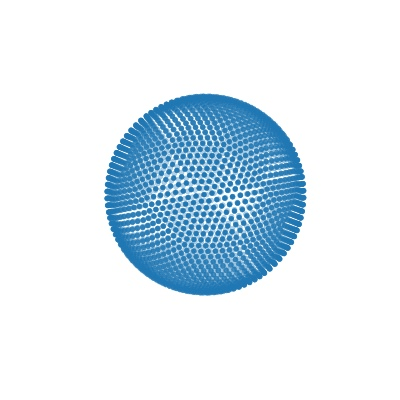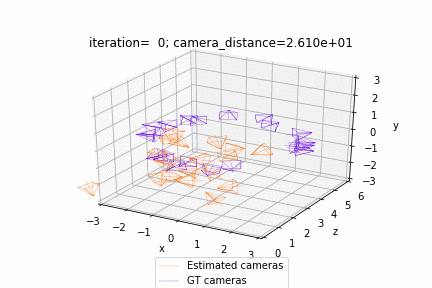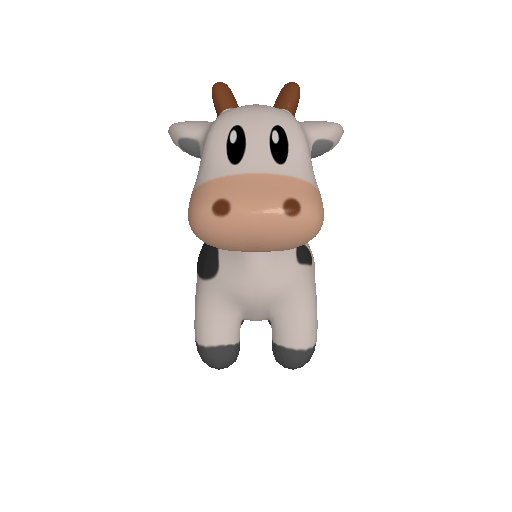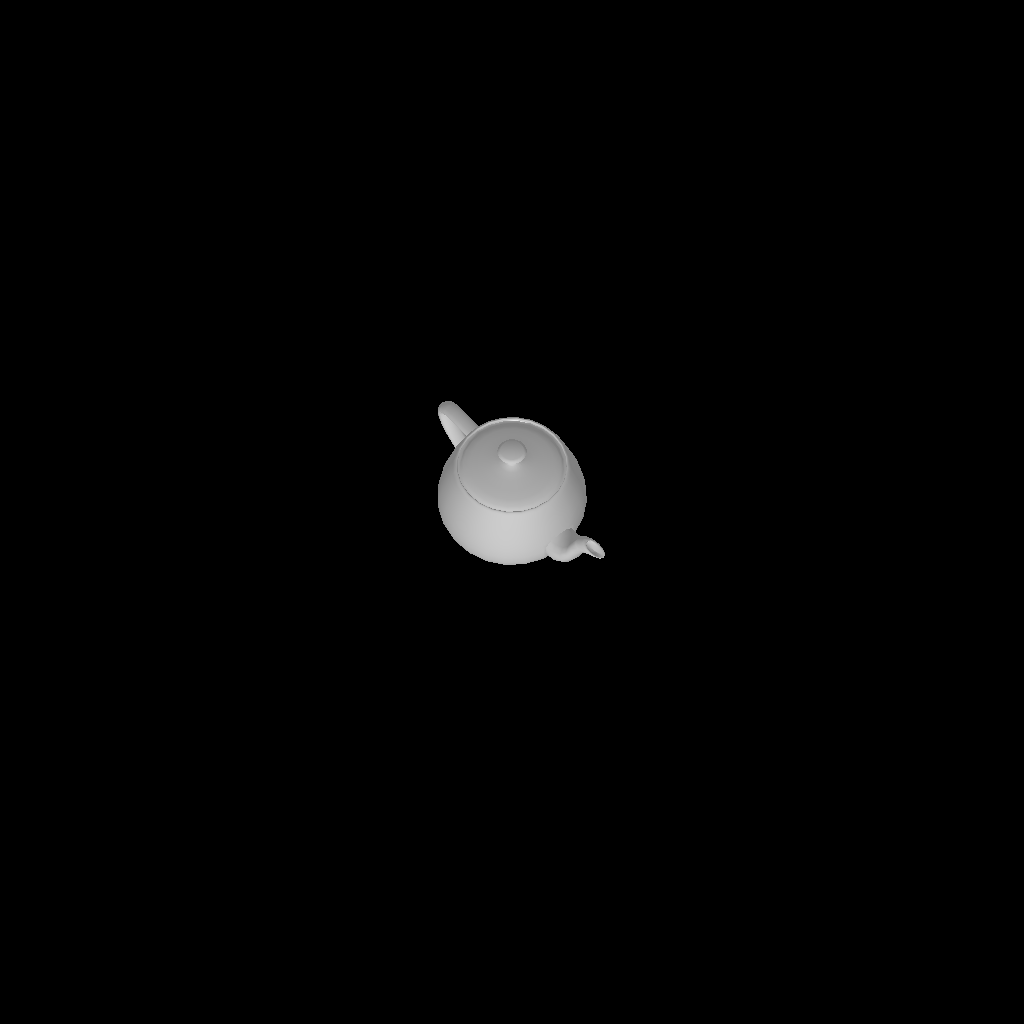# pytorch3d
**Repository Path**: richpointcloud/pytorch3d
## Basic Information
- **Project Name**: pytorch3d
- **Description**: PyTorch3d is FAIR's library of reusable components for deep learning with 3D data.
- **Primary Language**: Unknown
- **License**: BSD-3-Clause
- **Default Branch**: master
- **Homepage**: None
- **GVP Project**: No
## Statistics
- **Stars**: 0
- **Forks**: 0
- **Created**: 2021-04-08
- **Last Updated**: 2024-08-09
## Categories & Tags
**Categories**: Uncategorized
**Tags**: None
## README
 [](https://circleci.com/gh/facebookresearch/pytorch3d)
[](https://anaconda.org/pytorch3d/pytorch3d)
# Introduction
PyTorch3d provides efficient, reusable components for 3D Computer Vision research with [PyTorch](https://pytorch.org).
Key features include:
- Data structure for storing and manipulating triangle meshes
- Efficient operations on triangle meshes (projective transformations, graph convolution, sampling, loss functions)
- A differentiable mesh renderer
PyTorch3d is designed to integrate smoothly with deep learning methods for predicting and manipulating 3D data.
For this reason, all operators in PyTorch3d:
- Are implemented using PyTorch tensors
- Can handle minibatches of hetereogenous data
- Can be differentiated
- Can utilize GPUs for acceleration
Within FAIR, PyTorch3d has been used to power research projects such as [Mesh R-CNN](https://arxiv.org/abs/1906.02739).
## Installation
For detailed instructions refer to [INSTALL.md](INSTALL.md).
## License
PyTorch3d is released under the [BSD-3-Clause License](LICENSE).
## Tutorials
Get started with PyTorch3d by trying one of the tutorial notebooks.
|
[](https://circleci.com/gh/facebookresearch/pytorch3d)
[](https://anaconda.org/pytorch3d/pytorch3d)
# Introduction
PyTorch3d provides efficient, reusable components for 3D Computer Vision research with [PyTorch](https://pytorch.org).
Key features include:
- Data structure for storing and manipulating triangle meshes
- Efficient operations on triangle meshes (projective transformations, graph convolution, sampling, loss functions)
- A differentiable mesh renderer
PyTorch3d is designed to integrate smoothly with deep learning methods for predicting and manipulating 3D data.
For this reason, all operators in PyTorch3d:
- Are implemented using PyTorch tensors
- Can handle minibatches of hetereogenous data
- Can be differentiated
- Can utilize GPUs for acceleration
Within FAIR, PyTorch3d has been used to power research projects such as [Mesh R-CNN](https://arxiv.org/abs/1906.02739).
## Installation
For detailed instructions refer to [INSTALL.md](INSTALL.md).
## License
PyTorch3d is released under the [BSD-3-Clause License](LICENSE).
## Tutorials
Get started with PyTorch3d by trying one of the tutorial notebooks.
| |
| |
|:-----------------------------------------------------------------------------------------------------------:|:--------------------------------------------------:|
| [Deform a sphere mesh to dolphin](https://github.com/fairinternal/pytorch3d/blob/master/docs/tutorials/deform_source_mesh_to_target_mesh.ipynb)| [Bundle adjustment](https://github.com/fairinternal/pytorch3d/blob/master/docs/tutorials/bundle_adjustment.ipynb) |
|
|
|:-----------------------------------------------------------------------------------------------------------:|:--------------------------------------------------:|
| [Deform a sphere mesh to dolphin](https://github.com/fairinternal/pytorch3d/blob/master/docs/tutorials/deform_source_mesh_to_target_mesh.ipynb)| [Bundle adjustment](https://github.com/fairinternal/pytorch3d/blob/master/docs/tutorials/bundle_adjustment.ipynb) |
|  |
|  |:------------------------------------------------------------:|:--------------------------------------------------:|
| [Render textured meshes](https://github.com/fairinternal/pytorch3d/blob/master/docs/tutorials/render_textured_meshes.ipynb)| [Camera position optimization](https://github.com/fairinternal/pytorch3d/blob/master/docs/tutorials/camera_position_optimization_with_differentiable_rendering.ipynb)|
## Documentation
Learn more about the API by reading the PyTorch3d [documentation](https://pytorch3d.readthedocs.org/).
We also have deep dive notes on several API components:
- [Heterogeneous Batching](https://github.com/facebookresearch/pytorch3d/tree/master/docs/notes/batching.md)
- [Mesh IO](https://github.com/facebookresearch/pytorch3d/tree/master/docs/notes/meshes_io.md)
- [Differentiable Rendering](https://github.com/facebookresearch/pytorch3d/tree/master/docs/notes/renderer_getting_started.md)
## Development
We welcome new contributions to Pytorch3d and we will be actively maintaining this library! Please refer to [CONTRIBUTING.md](./.github/CONTRIBUTING.md) for full instructions on how to run the code, tests and linter, and submit your pull requests.
## Contributors
PyTorch3d is written and maintained by the Facebook AI Research Computer Vision Team.
## Citation
If you find PyTorch3d useful in your research, please cite:
```bibtex
@misc{ravi2020pytorch3d,
author = {Nikhila Ravi and Jeremy Reizenstein and David Novotny and Taylor Gordon
and Wan-Yen Lo and Justin Johnson and Georgia Gkioxari},
title = {PyTorch3D},
howpublished = {\url{https://github.com/facebookresearch/pytorch3d}},
year = {2020}
}
```
|:------------------------------------------------------------:|:--------------------------------------------------:|
| [Render textured meshes](https://github.com/fairinternal/pytorch3d/blob/master/docs/tutorials/render_textured_meshes.ipynb)| [Camera position optimization](https://github.com/fairinternal/pytorch3d/blob/master/docs/tutorials/camera_position_optimization_with_differentiable_rendering.ipynb)|
## Documentation
Learn more about the API by reading the PyTorch3d [documentation](https://pytorch3d.readthedocs.org/).
We also have deep dive notes on several API components:
- [Heterogeneous Batching](https://github.com/facebookresearch/pytorch3d/tree/master/docs/notes/batching.md)
- [Mesh IO](https://github.com/facebookresearch/pytorch3d/tree/master/docs/notes/meshes_io.md)
- [Differentiable Rendering](https://github.com/facebookresearch/pytorch3d/tree/master/docs/notes/renderer_getting_started.md)
## Development
We welcome new contributions to Pytorch3d and we will be actively maintaining this library! Please refer to [CONTRIBUTING.md](./.github/CONTRIBUTING.md) for full instructions on how to run the code, tests and linter, and submit your pull requests.
## Contributors
PyTorch3d is written and maintained by the Facebook AI Research Computer Vision Team.
## Citation
If you find PyTorch3d useful in your research, please cite:
```bibtex
@misc{ravi2020pytorch3d,
author = {Nikhila Ravi and Jeremy Reizenstein and David Novotny and Taylor Gordon
and Wan-Yen Lo and Justin Johnson and Georgia Gkioxari},
title = {PyTorch3D},
howpublished = {\url{https://github.com/facebookresearch/pytorch3d}},
year = {2020}
}
``` [](https://circleci.com/gh/facebookresearch/pytorch3d)
[](https://anaconda.org/pytorch3d/pytorch3d)
# Introduction
PyTorch3d provides efficient, reusable components for 3D Computer Vision research with [PyTorch](https://pytorch.org).
Key features include:
- Data structure for storing and manipulating triangle meshes
- Efficient operations on triangle meshes (projective transformations, graph convolution, sampling, loss functions)
- A differentiable mesh renderer
PyTorch3d is designed to integrate smoothly with deep learning methods for predicting and manipulating 3D data.
For this reason, all operators in PyTorch3d:
- Are implemented using PyTorch tensors
- Can handle minibatches of hetereogenous data
- Can be differentiated
- Can utilize GPUs for acceleration
Within FAIR, PyTorch3d has been used to power research projects such as [Mesh R-CNN](https://arxiv.org/abs/1906.02739).
## Installation
For detailed instructions refer to [INSTALL.md](INSTALL.md).
## License
PyTorch3d is released under the [BSD-3-Clause License](LICENSE).
## Tutorials
Get started with PyTorch3d by trying one of the tutorial notebooks.
|
[](https://circleci.com/gh/facebookresearch/pytorch3d)
[](https://anaconda.org/pytorch3d/pytorch3d)
# Introduction
PyTorch3d provides efficient, reusable components for 3D Computer Vision research with [PyTorch](https://pytorch.org).
Key features include:
- Data structure for storing and manipulating triangle meshes
- Efficient operations on triangle meshes (projective transformations, graph convolution, sampling, loss functions)
- A differentiable mesh renderer
PyTorch3d is designed to integrate smoothly with deep learning methods for predicting and manipulating 3D data.
For this reason, all operators in PyTorch3d:
- Are implemented using PyTorch tensors
- Can handle minibatches of hetereogenous data
- Can be differentiated
- Can utilize GPUs for acceleration
Within FAIR, PyTorch3d has been used to power research projects such as [Mesh R-CNN](https://arxiv.org/abs/1906.02739).
## Installation
For detailed instructions refer to [INSTALL.md](INSTALL.md).
## License
PyTorch3d is released under the [BSD-3-Clause License](LICENSE).
## Tutorials
Get started with PyTorch3d by trying one of the tutorial notebooks.
| |
| |
|:-----------------------------------------------------------------------------------------------------------:|:--------------------------------------------------:|
| [Deform a sphere mesh to dolphin](https://github.com/fairinternal/pytorch3d/blob/master/docs/tutorials/deform_source_mesh_to_target_mesh.ipynb)| [Bundle adjustment](https://github.com/fairinternal/pytorch3d/blob/master/docs/tutorials/bundle_adjustment.ipynb) |
|
|
|:-----------------------------------------------------------------------------------------------------------:|:--------------------------------------------------:|
| [Deform a sphere mesh to dolphin](https://github.com/fairinternal/pytorch3d/blob/master/docs/tutorials/deform_source_mesh_to_target_mesh.ipynb)| [Bundle adjustment](https://github.com/fairinternal/pytorch3d/blob/master/docs/tutorials/bundle_adjustment.ipynb) |
|  |
|  |:------------------------------------------------------------:|:--------------------------------------------------:|
| [Render textured meshes](https://github.com/fairinternal/pytorch3d/blob/master/docs/tutorials/render_textured_meshes.ipynb)| [Camera position optimization](https://github.com/fairinternal/pytorch3d/blob/master/docs/tutorials/camera_position_optimization_with_differentiable_rendering.ipynb)|
## Documentation
Learn more about the API by reading the PyTorch3d [documentation](https://pytorch3d.readthedocs.org/).
We also have deep dive notes on several API components:
- [Heterogeneous Batching](https://github.com/facebookresearch/pytorch3d/tree/master/docs/notes/batching.md)
- [Mesh IO](https://github.com/facebookresearch/pytorch3d/tree/master/docs/notes/meshes_io.md)
- [Differentiable Rendering](https://github.com/facebookresearch/pytorch3d/tree/master/docs/notes/renderer_getting_started.md)
## Development
We welcome new contributions to Pytorch3d and we will be actively maintaining this library! Please refer to [CONTRIBUTING.md](./.github/CONTRIBUTING.md) for full instructions on how to run the code, tests and linter, and submit your pull requests.
## Contributors
PyTorch3d is written and maintained by the Facebook AI Research Computer Vision Team.
## Citation
If you find PyTorch3d useful in your research, please cite:
```bibtex
@misc{ravi2020pytorch3d,
author = {Nikhila Ravi and Jeremy Reizenstein and David Novotny and Taylor Gordon
and Wan-Yen Lo and Justin Johnson and Georgia Gkioxari},
title = {PyTorch3D},
howpublished = {\url{https://github.com/facebookresearch/pytorch3d}},
year = {2020}
}
```
|:------------------------------------------------------------:|:--------------------------------------------------:|
| [Render textured meshes](https://github.com/fairinternal/pytorch3d/blob/master/docs/tutorials/render_textured_meshes.ipynb)| [Camera position optimization](https://github.com/fairinternal/pytorch3d/blob/master/docs/tutorials/camera_position_optimization_with_differentiable_rendering.ipynb)|
## Documentation
Learn more about the API by reading the PyTorch3d [documentation](https://pytorch3d.readthedocs.org/).
We also have deep dive notes on several API components:
- [Heterogeneous Batching](https://github.com/facebookresearch/pytorch3d/tree/master/docs/notes/batching.md)
- [Mesh IO](https://github.com/facebookresearch/pytorch3d/tree/master/docs/notes/meshes_io.md)
- [Differentiable Rendering](https://github.com/facebookresearch/pytorch3d/tree/master/docs/notes/renderer_getting_started.md)
## Development
We welcome new contributions to Pytorch3d and we will be actively maintaining this library! Please refer to [CONTRIBUTING.md](./.github/CONTRIBUTING.md) for full instructions on how to run the code, tests and linter, and submit your pull requests.
## Contributors
PyTorch3d is written and maintained by the Facebook AI Research Computer Vision Team.
## Citation
If you find PyTorch3d useful in your research, please cite:
```bibtex
@misc{ravi2020pytorch3d,
author = {Nikhila Ravi and Jeremy Reizenstein and David Novotny and Taylor Gordon
and Wan-Yen Lo and Justin Johnson and Georgia Gkioxari},
title = {PyTorch3D},
howpublished = {\url{https://github.com/facebookresearch/pytorch3d}},
year = {2020}
}
```